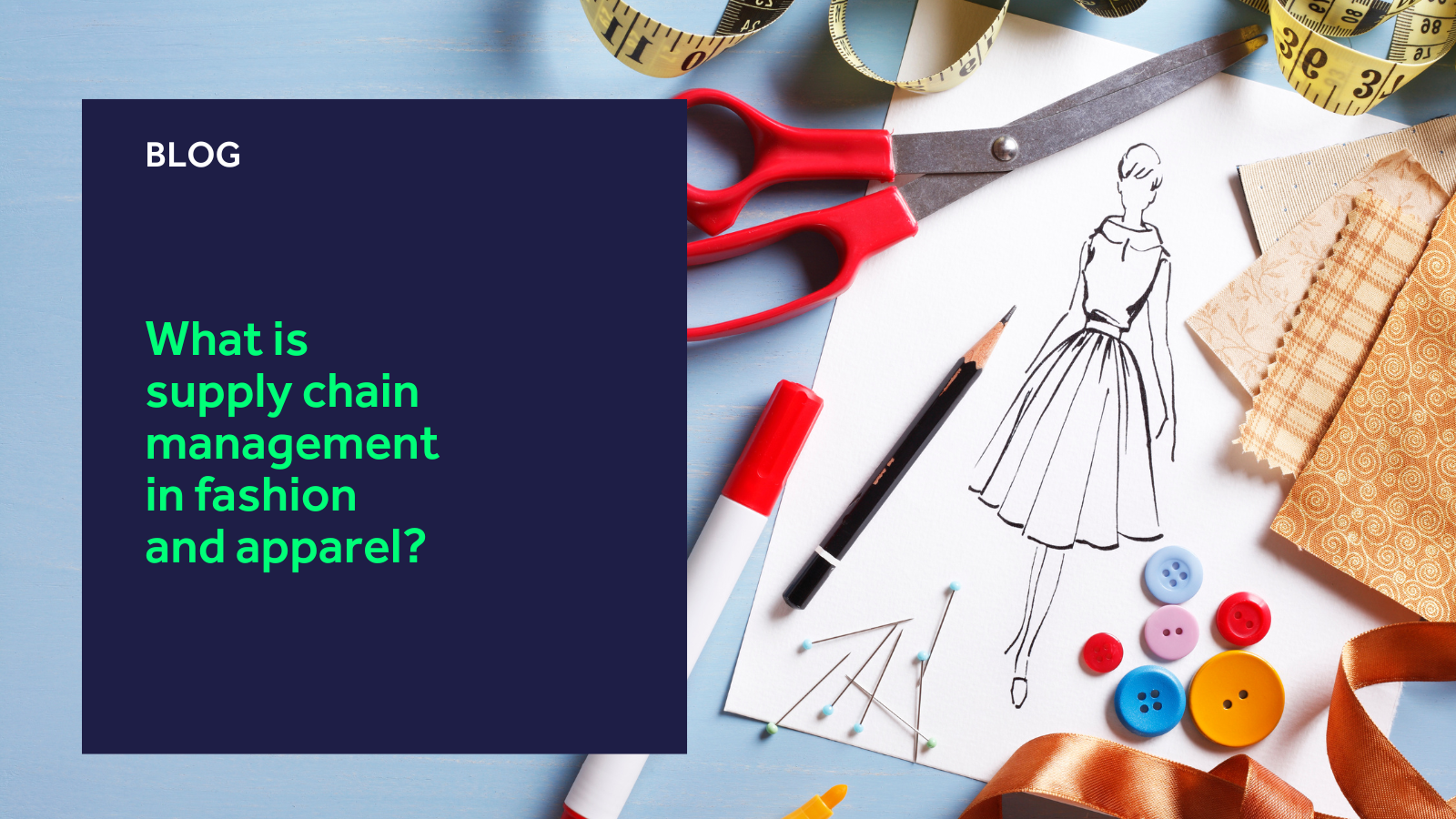In the consumption-fuelled world of fashion and apparel, where new products come to market daily, few brands have truly mastered supply chain management.
The role of the supply chain is essential to ensuring these items arrive promptly, particularly as the modern consumer continues to expect more and more.
Fortunately, software is available to help the fashion industry with supply chain management.
But first… let’s take a step back and examine why brands struggle with supply chains.
Why are fashion supply chains complex?
Fashion and apparel are all about the new: more seasons, more styles, and more sales.
Traditionally, brands run two collections – Spring/Summer and Autumn/Winter – but there are other common in-between seasons, like High Summer and Christmas.
However, as the industry has evolved, some brands sell fast fashion, bringing collections to market monthly, weekly or even daily.
Today, it’s difficult to categorically state how many collections a typical brand produces because it differs per company. But broadly speaking…
We can say that, on average, brands produce between two and 12 collections per year, and within each collection, there are 50-250 styles. Each style can have between two and ten colours and four to 15 sizes.
It doesn’t take a rocket scientist to realise that fashion and apparel companies manage hundreds of thousands of item variants at any given time of year.
Each and every individual variant must be managed in the supply chain.
It’s a nightmare.
And that’s without mentioning the nuances within certain sub-verticals, like outdoor wear. Due to raw material scarcity, these brands’ planning takes place much earlier.
Since outdoor wear must be highly functional and durable, particular raw materials are needed to create the finished items.
Naturally, lead times can vary depending on the scarcity of raw materials, adding complexity to the supply chain.
The above just describes what specifically fashion and apparel brands must deal with… not wider supply chain challenges.
As the last several years have shown, other factors like rising costs, geopolitical conflicts, and the blocking of the Suez Canal can have humungous effects on the supply chain.
What does a typical fashion supply chain look like?
Now that we’ve looked into what makes supply chains complex, it’s time to examine what a ‘typical’ supply chain involves.
While it’s true no two supply chains will ever be the same, we can broadly map a typical fashion product supply chain in the following stages and key players:
Raw materials producer
Garments are created from multiple components, but the process always begins with raw materials. Often, these are basic and classified as either natural or synthetic.
Natural raw materials, like cotton or linen, derive from plants and animals, while synthetic raw materials are typically man-made.
Raw materials wholesaler
Raw materials are sourced, collected, and sold worldwide. Cotton, for example, is grown by farmers in various countries, while artificial fabrics are often sourced directly from textile companies.
Textiles
Textile companies receive raw materials from wholesalers and use them to create yarns and, subsequently, fabrics. The main types of fabrics are woven and knitted, both of which need to be dyed and/or printed.
Fabrics wholesaler
Like raw materials, fabrics are created in multiple geographies. Manufacturers typically purchase the finished fabrics from wholesalers who play a strategic role in the supply chain.
Manufacturing
For the sake of brevity, we’ll keep this step simple. Fashion brands commission manufacturers to turn fabrics into clothing. Several operations are involved, including cutting, sewing, and patternmaking.
Clothing wholesaler
Once the commissioned garments have been created, they must be distributed to retailers, who sell the goods to consumers. Once again, parties work between the manufacturers and retailers, like agents, importers, and fashion brands.
Retail
The ‘final’ stage in this typical supply chain is retail, which refers to shops that receive the goods from brands and sell them to consumers.
This generally includes independent retailers, entrepreneurs, and large chains.
For most brands, this is where their supply chains end unless they have channels established to handle returned goods for reselling or repurposing.
Again, this overview represents a typical supply chain—it can differ significantly depending on the brand in question, such as whether it deals with outdoor wear, luxury clothing, or fast fashion.
The point being:
Supply chains are incredibly complex, with a plethora of stages and parties that all depend on one another.
An unpredicted storm on a farm could lead to raw material delays, or rerouted deliveries could impact how quickly a retailer receives the finished goods.
Fashion brands need robust software solutions to help them manage their supply chains, providing opportunities to increase visibility, boost agility, and drive efficiency.
Benefits of supply chain management
Supply chain management solutions offer fashion and apparel brands numerous benefits, including:
- Visibility
- Transparency
- Agility
- Efficiency
- Cost-effectiveness
By seamlessly connecting operations with a solution for managing supply chain processes from end to end, brands benefit from a single version of data truth.
Such visibility is crucial to achieving transparency in their supply chains, enabling them to see potential errors and inefficiencies early.
This insight allows businesses to pivot quickly and make informed decisions that improve efficiency, leading to additional revenue.
To borrow an earlier example, if a major incident occurs on a standard delivery route, brands must be able to change the route and mitigate the impact of the delay.
Likewise, if raw materials are proving particularly scarce and lead times increase significantly, brands need to decide what to do next.
This could include prioritising key customers while delaying deliveries for other clients.
Suffice to say, there are countless issues that can, and will, arise in the fashion supply chain, meaning brands must find the right solution for their business.
Optimise supply chain management with K3 Fashion
Fear not – supply chain management may have been the bane of fashion and apparel in the past, but not anymore.
At K3, we specialise in helping brands navigate their biggest challenges. Our portfolio of best-in-suite solutions is designed to handle everything from concept to consumer.
Our K3 Fashion solution, fully embedded in Dynamics 365 Finance, Supply Chain Management and Commerce, traverses the entire fashion journey, optimising inventory and distribution processes to drive profitability with real-time planning capabilities.
Sound interesting? Discover how K3 Fashion can help you with supply chain management today.
 https://www.k3btg.com/wp-content/uploads/2024/03/K3-strengthens-global-market-position-blog-header.png
900
1600
Jordan Heal
https://www.k3btg.com/wp-content/uploads/2022/03/K3_Master_Colour_RGB.svg
Jordan Heal2024-03-11 10:58:242025-02-21 14:37:51K3 Fashion Portfolio strengthens global market position as Tony Bryant spearheads new role
https://www.k3btg.com/wp-content/uploads/2024/03/K3-strengthens-global-market-position-blog-header.png
900
1600
Jordan Heal
https://www.k3btg.com/wp-content/uploads/2022/03/K3_Master_Colour_RGB.svg
Jordan Heal2024-03-11 10:58:242025-02-21 14:37:51K3 Fashion Portfolio strengthens global market position as Tony Bryant spearheads new role

